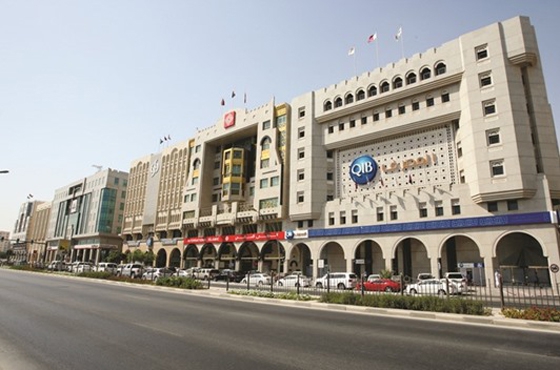Qatar’s banking system is well-positioned to weather lower energy price scenario with high quality Tier I capital, according to the Institute of International Finance (IIF).
Moreover, the sharp decline in growth of deposits since 2014 and large bond and sukuk issuances have dried up liquidity and pushed up market rates and the government borrowing has begun to crowd out credit to other segments, Washington-based IIF said in a report.
Indicating the soundness in the financial sector, IIF highlighted that capital adequacy is high at 15.6%, mostly in the form of high-quality Tier 1 capital.
However, the rapid increase in risk weighted assets and a policy of high dividend payments by banks has meant that banks have had to periodically raise additional capital, it said, highlighting that the banking industry return on average assets stood at 2% in 2015 against 2.1% in 2014 and 2013, and 2.4% in 2012.
The capital adequacy was 18.9% in 2012, which then fell to 16% in 2013 but marginally increased to 16.3% in the subsequent year, it said.
Finding that the banking system remains highly profitable, with the return on equity at 16.2% in 2015; IIF, however, said volume growth is expected to decelerate, and while banks are trying to re-price loans to reflect increased funding costs, margins have come under pressure.
The Qatari banking industry’s return over average equity was 17.7% in 2012, which then fell to 16.5% in 2013 and 2014 respectively.
“While we expect some worsening in credit quality, non-performing loans are still low at 1.6% of gross loans,” the report said, adding in 2012, the non-performing loans were 1.7% of total loans in 2012, 1.9% in 2013 and 1.7% in 2014.
IIF also found that Qatar’s banking industry has made 100% provisions towards non-performing loans in 2015, which was higher than 99% in 2014, and 97% in 2014 and 2013 respectively.
The sharp deceleration in growth of bank deposits since end-2014 combined with the large bond and sukuk issuances have tightened liquidity and pushed up market rates, IIF observed.
The three-month riyal interbank rate has risen to 1.8% in June from 1.1% last year, it said, adding the authorities cancelled T-bill (treasury bill) auctions in the first quarter and although T-bill auctions have since resumed, they appear to be designed to rollover existing issues rather than being for additional borrowing.
Finding that growth in credit to the economy (to the private sector and non-financial public enterprises) has weakened; IIF said small and medium enterprises have struggled with the drop in commodity prices, and strains appear to have been exacerbated by tighter lending availability.
Other segments affected by stricter lending conditions include contractors and individuals, reflecting banks’ unease with project cuts, government payment delays, and layoffs, it added.
“With resident deposit growth stalling, we would expect credit to the economy to slow further to 9% by end-2016, from 19.7% at end-2015,” it said.
The country’s banking industry’s net interest income to average assets stood at 2.2% in 2015 compared to 2.3% in 2014, 2.5% in 2013 and 2.6% in 2012.
Although growth in monetary aggregates and resident deposits has slowed sharply in recent months, high interest rates have led to a near-doubling in deposits from non-residents (particularly from countries in the Middle East and North Africa or Mena region) as well as increased funding from foreign banks.
“Nonetheless, liquidity has tightened, with the loan-to-deposit ratio rising to 119% in April 2016, the highest in the Mena region,” IIF said, adding the ratio stood at 111% in 2012, 105% in 2013, 108% in 2014 and 115% in 2015.
The loans-to-gross domestic product (GDP) was higher at 123% in 2015 compared to 86% in 2014, 78% in 2014 and 74% in 2012, while those to non-oil GDP was 194%, 170%, 171% and 170% respectively, the report said.
Gulf Times
4 July























































